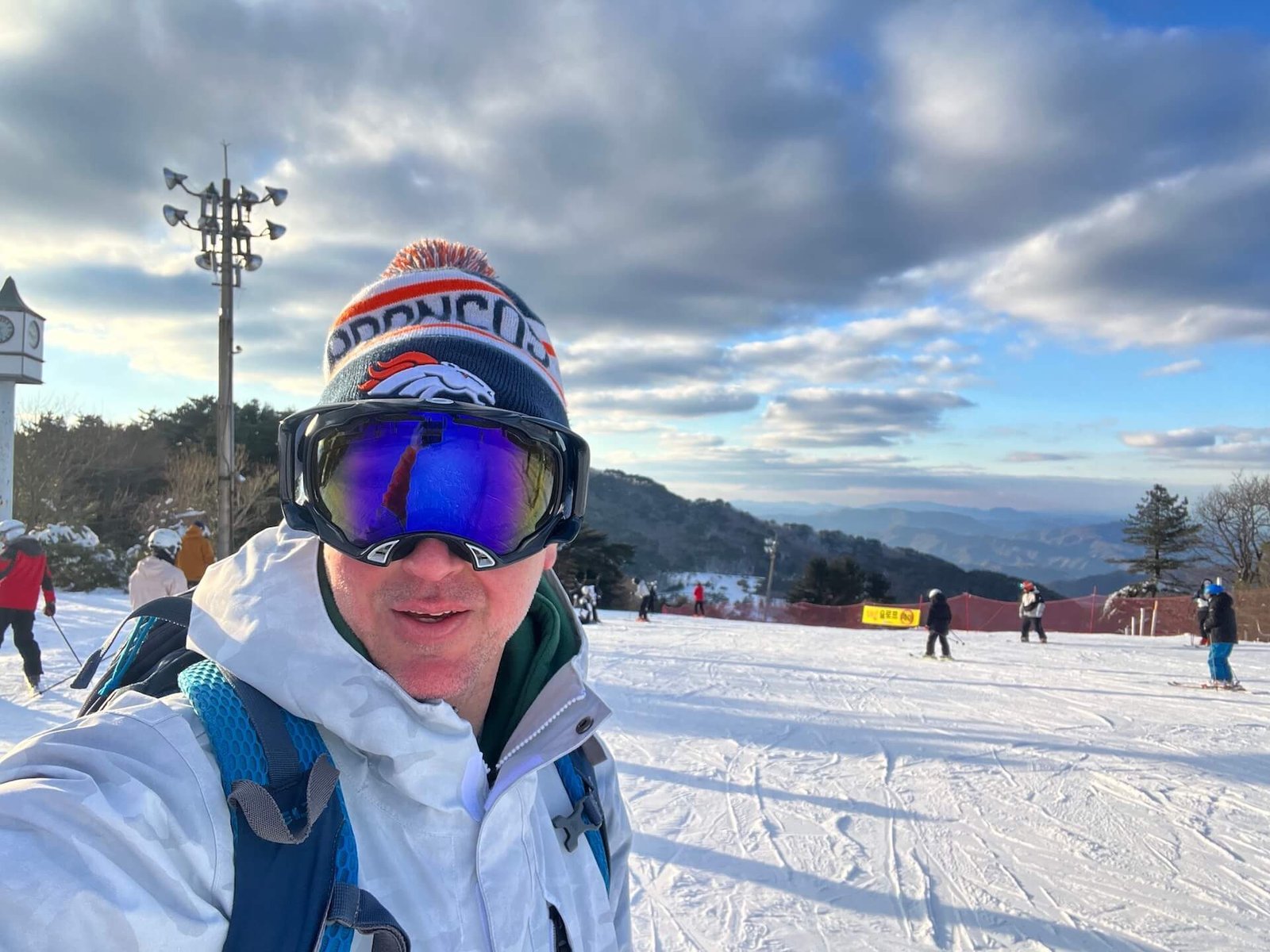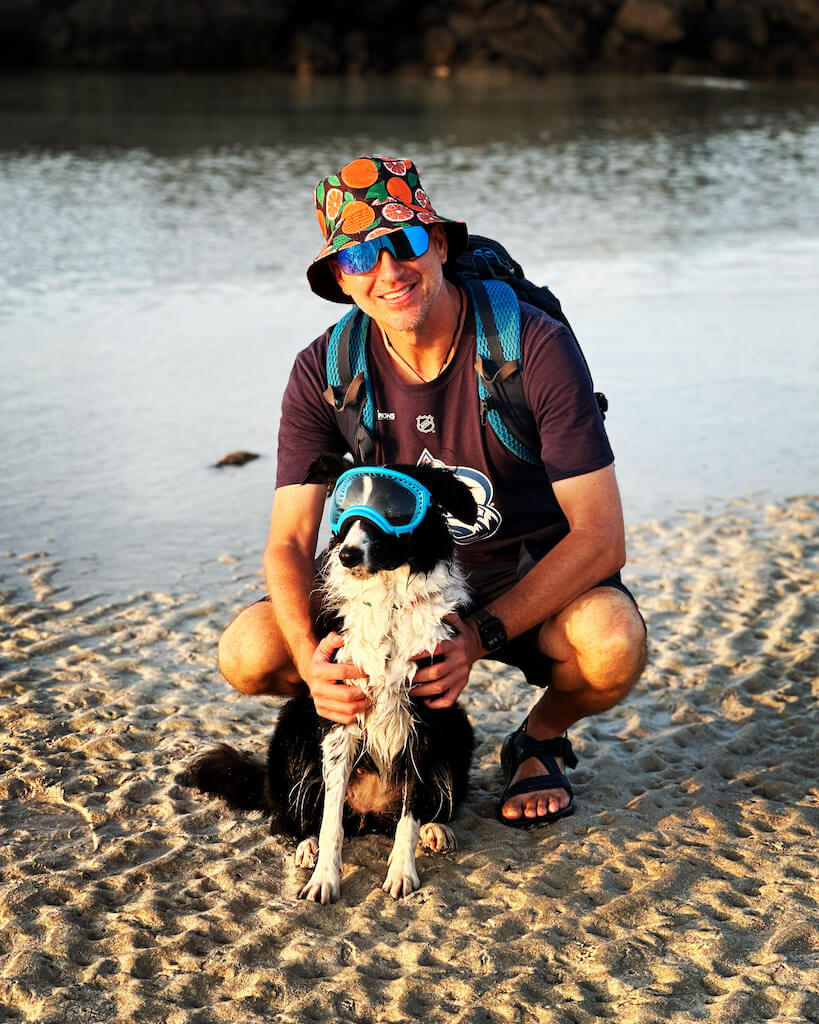Where to go skiing in Asia in 2026 — beyond Japan? This deep-dive explores off-the-radar spots like Gulmarg, Jyrgalan, and Shymbulak, with planning tips, cost breakdowns, and reflections from a skier actively mapping out his next move.
🏔️ From Colorado to Korea: A Skier’s Winding Path Toward Japow — and to What’s Next?
I grew up in the ski town of Vail, Colorado, and a question I get all the time is: Why did you ever leave? And better yet — how did you end up living in South Korea for the better part of 20 years when you could still be lapping the Back Bowls on your lunch break?
There’s no simple answer to that. Honestly, explaining it properly would require some soul-searching, a good therapist, and a very patient listener — probably someone who only asked out of politeness.
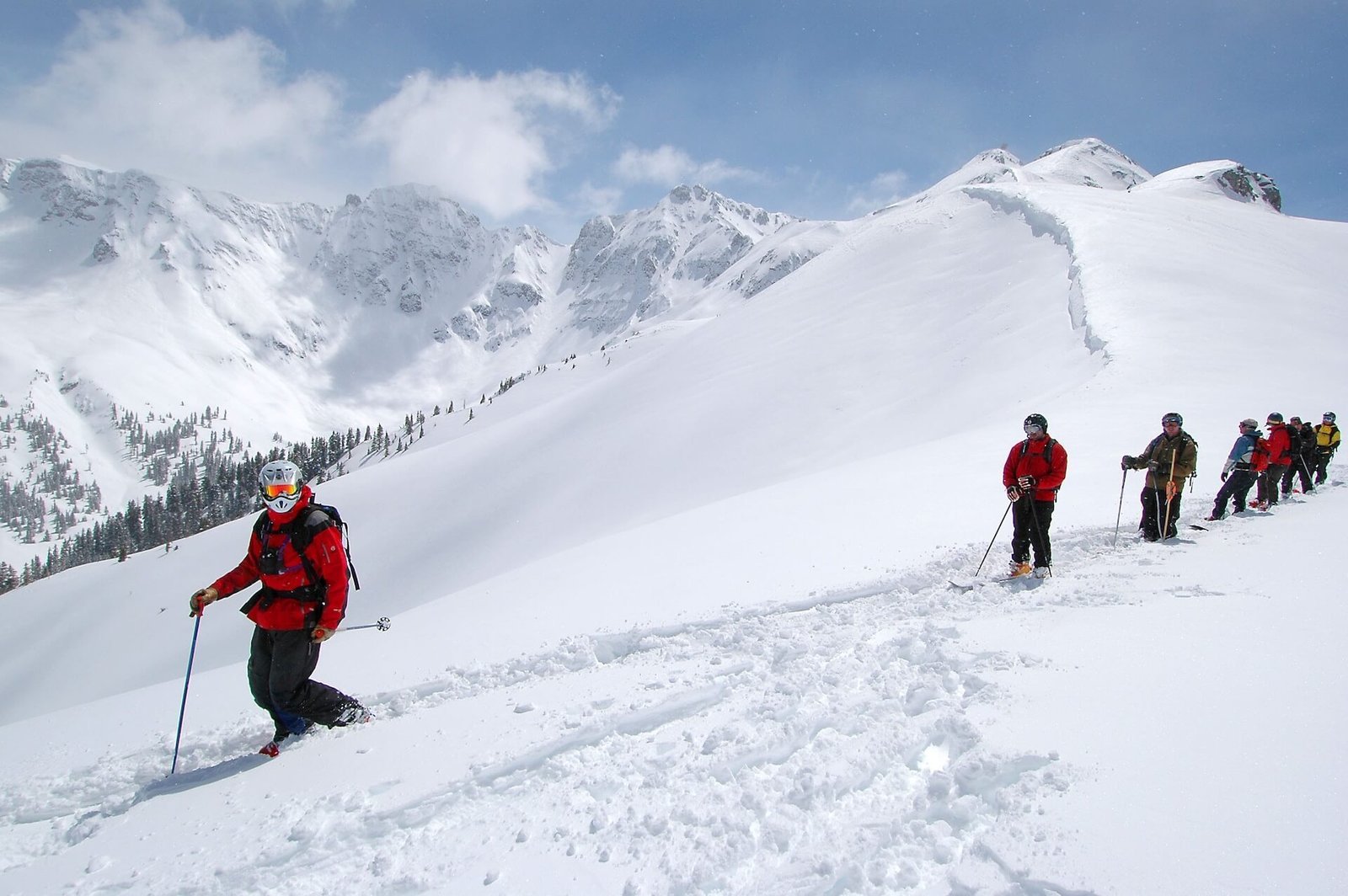
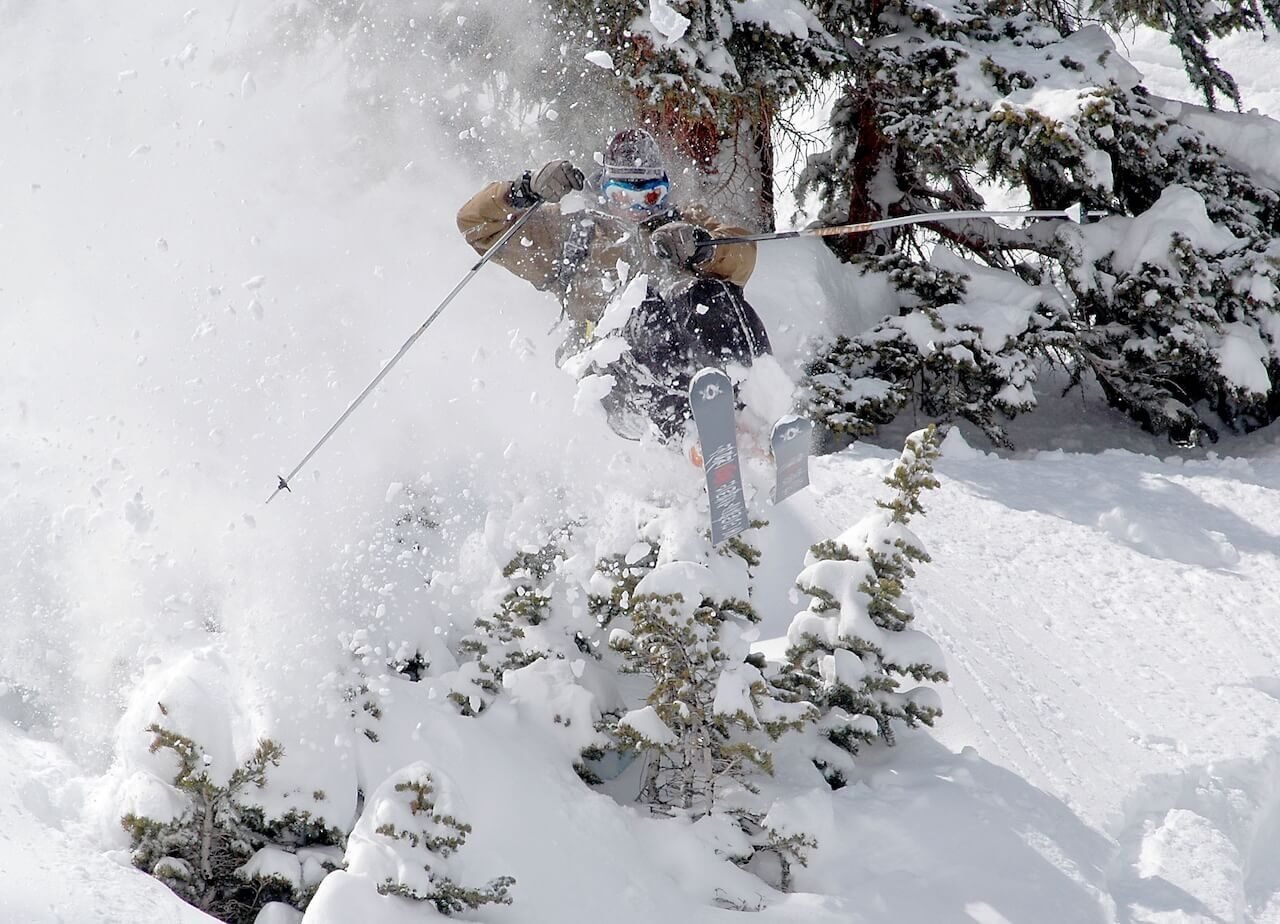
But the short version? I took a year off from my PR job in Vail to ski-bum in New Zealand, then tacked on a few more months through the South Pacific, Australia, and South America. Somewhere along the way, my priorities shifted. My curiosity and hunger to explore started burning even stronger than my lifelong love of skiing.
Vail had changed too. I know that probably sounds like an old man yelling at clouds, but it’s true. The place I’d grown up in had grown up too. It had become a mega resort with mega resort problems. I still loved the skiing, the hiking, the mountain life — but it wasn’t the small-town ski community I remembered.
Eventually, after one too many “extended vacations” to South America and Asia, my boss ran out of patience — and I settled into a new life as an English teacher in South Korea. It let me keep feeding my wanderlust with annual trips around Asia. But admittedly, skiing took a bit of a back seat.
Still, I was a Colorado kid at heart, and I skied where and when I could in Korea. I’ve even written a few guides to help others navigate places like Muju, High 1, and Yongpyong.
Korean resorts scratch the itch. Kind of like East Coast skiing might for a lot of North Americans. You get some turns in, you have a good time with family and friends. . .but let’s be honest — you’re not going to be telling stories about those few inches of freshies ten years from now.
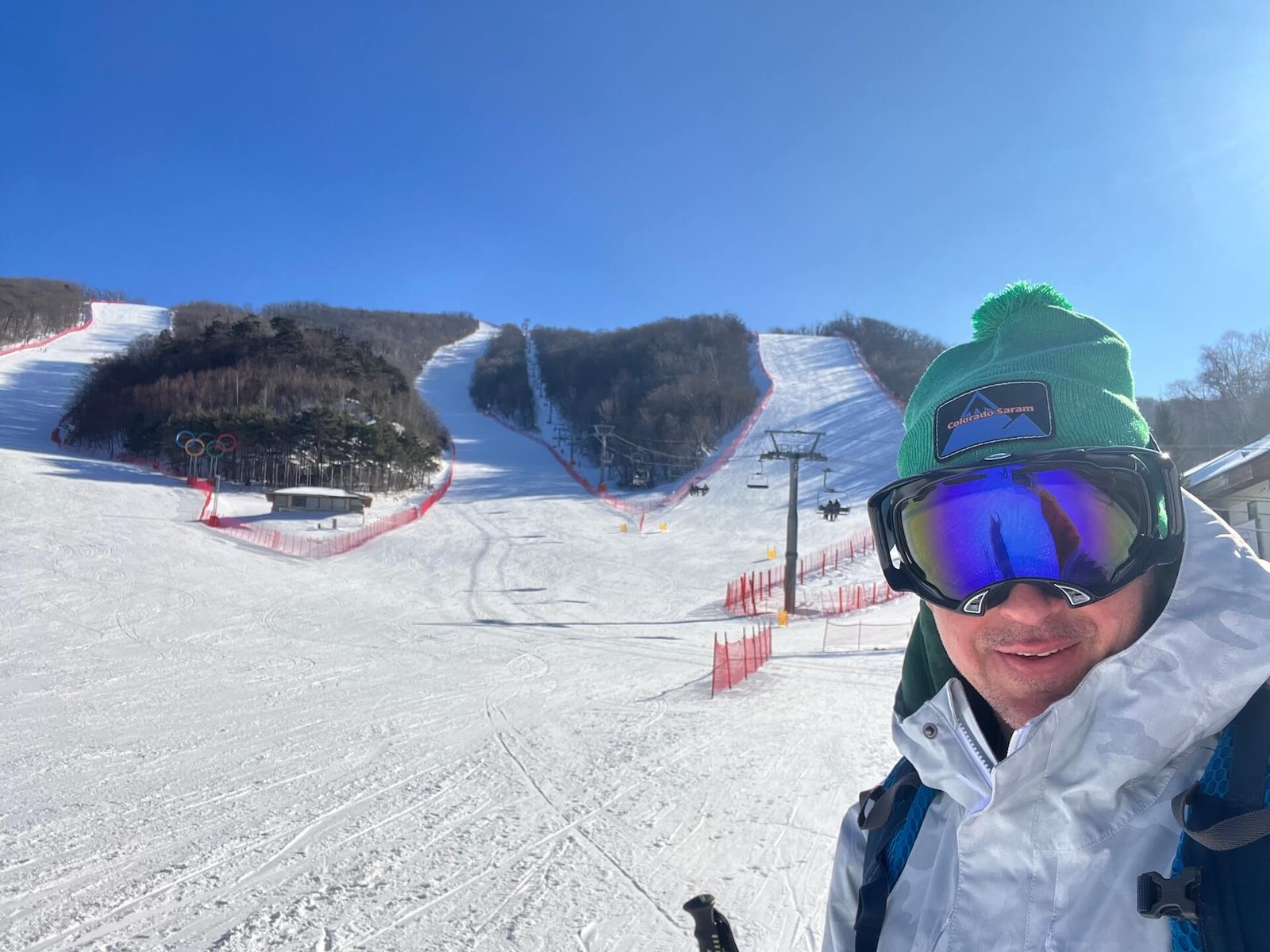
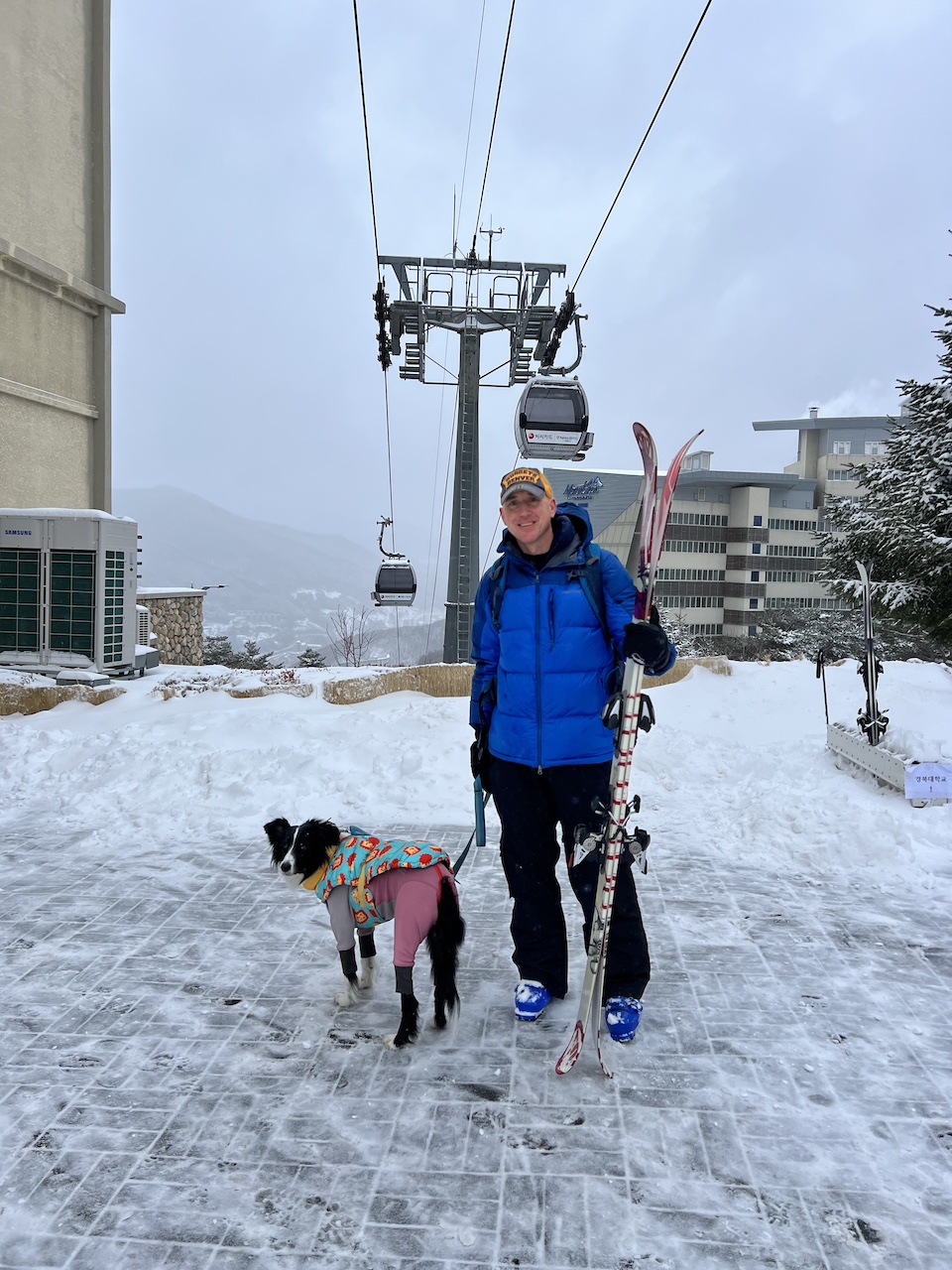
That’s why, for the past 15 years, Japan has been my go-to for chasing the real goods.
If you’ve never heard the term Japow, it’s a mashup of “Japan” and “powder” — and it’s not just clever marketing. Hokkaido, Japan’s northern island, gets absolutely hammered with cold, dry snow thanks to Siberian storms sweeping across the Sea of Japan. We’re talking deep, consistent, face-shot-worthy snow all winter long.
My first trip was to Hakuba Valley in 2008 — a welcome change after my first ski season in Korea. But it wasn’t until 2014, at Niseko on Hokkaido, that I truly learned the meaning of Japow. It dumped. And I mean nuked. All four days I was there. I caught a few bluebird windows, but for the most part, those massive, dry flakes just kept falling.

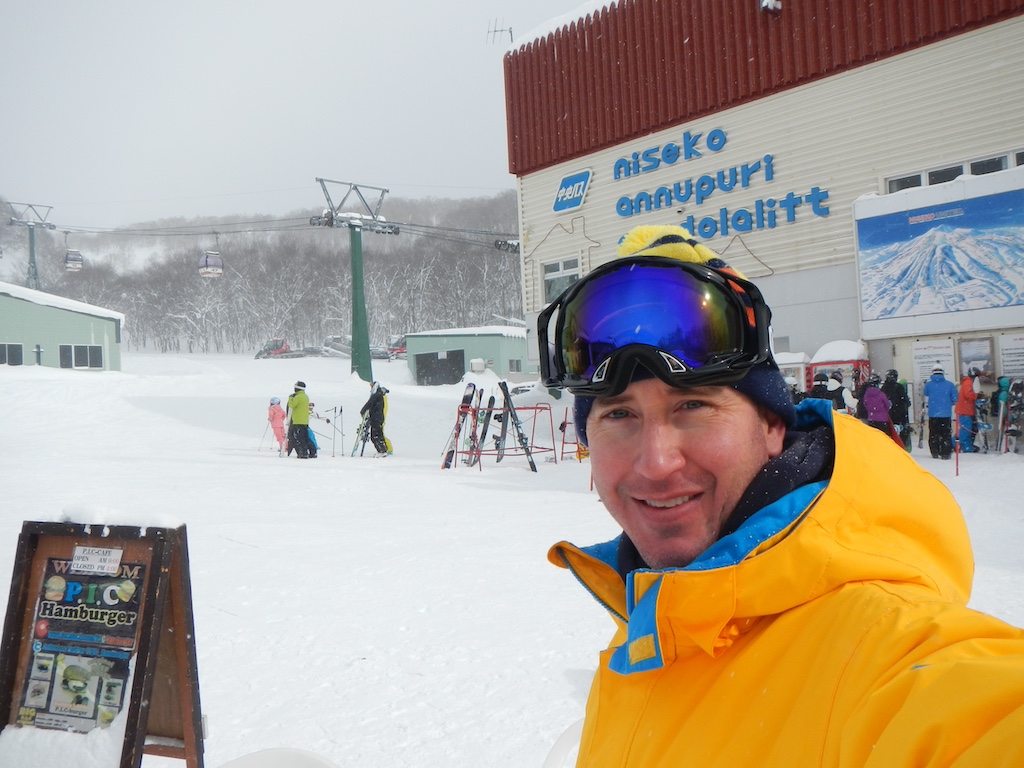
Back then, as an American, it felt like I’d been let in on a secret. The resort was filled with Aussies, a few Kiwis, and plenty of Japanese families. When I told people I was from the U.S., there was genuine surprise. Americans aren’t exactly famous for putting their passports to use.
Fast forward to 2025. After nearly 20 years of living in Asia, I finally convinced my brother to come meet me in Hokkaido. He brought one of his Denver buddies, and we rented a car to split time between Niseko and Rusutsu. Once again, the Japow delivered. But it was clear things were changing.

The Aussies were still there in force, along with the usual crew of international ski workers. But this time, Americans had arrived in numbers. The accents in the lift lines, the restaurant waitlists, the general vibe in town — it all pointed to a new era. Japow had officially gone global, helped along by partnerships with the IKON and Epic passes.
Let me be clear: I’m not writing this to bash skiing in Japan. It still might be the best in Asia, and as a travel destination, Japan is absolutely worth it. I wouldn’t discourage anyone from chasing their Japow dreams. In fact, I’ll be writing more soon about just how amazing it still is.
That said — for my 2026 winter trip, I’m ready to branch out into Central Asia. Not because Japow has lost its magic, but because I’m looking for something a little less familiar. I miss the feeling of landing somewhere unexpected, where showing up with skis and a U.S. passport still turns a few heads.
I haven’t made a final call yet, and I usually stick to writing about places I’ve actually been. But this post is a little different: part research log, part brainstorming session, and maybe a long-overdue refill of the bucket list.
If it helps a few fellow wayward powderhounds figure out where to point their tips next winter — or sometime down the line — all the better. I don’t usually go fishing for input, but if you’ve skied any of these places — or wrestled with a similar decision — I’d genuinely love to hear what you learned.
Oh, and in case you’re wondering — none of the links in this post are sponsored or affiliate marketing. It’s just me, “doing my own research,” like your uncle on Facebook.
(That may not always be the case across this blog, but I’ll always flag it when it is.)
🇯🇵 Why I’m Looking Beyond Japan in 2026
Skiing in Japan is still one of the best winter experiences on the planet. But during my most recent trip to Hokkaido in 2025, it was clear just how much had changed since my first visit.
The snow is still incredible — that part hasn’t changed. But the secret is out, and with it has come a wave of growing pains: bigger crowds, higher prices, longer lift lines, and a vibe that feels a little more like a busy weekend in Colorado than a hidden powder stash in Asia.
Some of the biggest changes I noticed on this latest trip:
- Dining requires planning. Most restaurants around Niseko now require reservations — often days in advance, and sometimes with a surprisingly hefty deposit. That was a major shift from my last visit, when I could walk into nearly any spot solo and enjoy an incredible meal at a reasonable price. This time, even the humble, family-run places were fully booked. I’m not exactly a foodie, but I was caught off guard — and so were my brother and his friend, who generally operate on a much higher dining budget than this English teacher in Korea. If you don’t plan ahead, be ready to dine on Japan’s famous convenience store cuisine.
- Lift lines are becoming a real factor. Especially at Niseko, though even Rusutsu isn’t immune. We’re not talking Vail-on-a-weekend insanity — but it’s trending that way. Even the backcountry gates had lines: queues, chatter, and a clear sense that the “secret” is officially out.
🎥 Watch: The backcountry gate line at Niseko in 2025 — King Lift queues and summit bootpack in full effect
- Post-Covid tourism is surging. Japan’s easing of entry rules has brought a global tourism boom. There’s talk of new visa requirements for some nationalities, and even rumors of tiered pricing for foreign visitors — possibly including lift tickets.
- High-end luxury is taking over. Hanazono’s once-sleepy base now boasts a Park Hyatt, with rooms starting around $2,000 a night in peak season. Yes, there are perks — like a sleek new heated six-pack lift and a modernized base area — but luxury tends to attract bigger crowds, steeper prices, and a shift in vibe. It’s not all bad, but as someone who can barely afford to visit my own hometown anymore, I can’t help but feel Niseko is heading the same way.
- Niseko Village feels maxed out. Rusutsu still holds a more relaxed vibe — though even there, base-area lift lines on powder days are becoming common. But in Niseko, everything from traffic and restaurant demand to ski bus bookings has scaled up. Toss in the creeping corporate ownership, and it doesn’t feel as laid-back as it did a decade ago.
After three unforgettable ski trips to Japan — and a pretty solid handle on what South Korea has to offer — I started wondering what else Asia might hold for skiers like me. The answer? A whole rabbit hole of places I hadn’t even considered: Kashmir. Kazakhstan. Kyrgyzstan. Northern China. Some of them might have to wait. But one thing was clear — I was officially ready to look elsewhere.
🎿 How I’m Choosing My Next Ski Trip in Asia
I wouldn’t say I have a checklist — at least not a formal one. It’s not like I’m filtering destinations by snowfall totals or vertical drop. But I do know I’m not flying across Asia just to pay for an experience that feels like skiing in Korea. That quietly takes a few spots off the table — especially some of the more polished resorts in China.
What I’m drawn to is harder to define. I’m looking for places that still feel a little raw. Somewhere that scratches both itches: the powder-chaser in me and the traveler who gets excited by landing somewhere unfamiliar, where things might not go exactly as planned. I want a trip that leaves me with stories — not just face shots.
Part of that is just who I am. I’ve always been curious about places most people skip. I went to Myanmar in 2006, long before it was on the average travel blogger’s radar — and long before it dropped back off again. So no, a country ending in -stan doesn’t scare me off. If anything, it may cause me to lean in a little closer.
“The journey is part of the experience — an expression of the seriousness of one’s intent. One doesn’t take the A train to Mecca.” – Anthony Bourdain
But I’ll be honest — part of this search is also professional. I’m slowly building this blog into something more: hopefully a trusted resource for skiers and trekkers looking beyond the obvious. Long-term, I’d love to grow it into a small side business offering personalized trip planning across Asia. I’m not there yet, but I’m experimenting — and for now, I’m offering free help to anyone curious.
👉 Check out my free travel planning program here
🇮🇳 Indian Kashmir’s Gulmarg: Risk Meets Reward
Not long after last winter’s epic trip to Hokkaido, I found myself thinking ahead to 2026. As a university English teacher in South Korea, I’m lucky to get two long paid vacations each year: summer and winter. That said, I’m also working within the confines of an English teacher’s salary.
With a milestone birthday on the horizon and a growing urge to avoid the Japow-chasing crowd (for all the reasons I’ve already touched on), I started dreaming — and scouring the internet — for ski destinations in Asia that were still a little under the radar and within reach of my budget.
Japan had delivered again. But I wasn’t looking to run it back.
My first Google search? “Can you ski in Kashmir?”
That question led me straight to Gulmarg, a high-altitude ski zone in Indian-administered Kashmir known for its massive vertical, deep snow, and full-on adventure vibe. After looking through a few tour operators, I was drawn to Gulmarg Powder Guides. Their decade-plus of experience and strong local reputation stood out immediately.
But it was the 10-minute Salomon TV video featured on their site that really stuck with me. The terrain, the snow, the story — it checked every box for me. If you can watch that and not start mentally packing your ski bag, we’re probably cut from different cloth.
🎥 Watch: Salomon TV’s Dream Trip to Kashmir with Gulmarg Powder Guides
For a while, Gulmarg was the plan. I even had a crew of Colorado friends lined up to join me. Then came the tragic April 2025 attack in Pahalgam, just a few hours away.
What had felt like an edgy-but-reasonable decision suddenly became a hard sell. My would-be travel partners dropped out immediately. I didn’t blame them — and I hit the pause button too. I haven’t crossed Gulmarg off the list. Not yet. For now, I’m staying tuned in and weighing things carefully.
Here’s the thing: I’m not reckless, and I’m definitely not chasing danger. But I also don’t believe in letting fear dictate all my choices. I visited Sri Lanka in 2017 and had an incredible trip. Two years later, a major terrorist attack rocked the country. Bad things happen everywhere. Honestly, the homicide rate in Denver is probably higher than the risk I’d face skiing in Kashmir — though good luck convincing my parents of that.
Still, I’m not throwing caution to the wind. I’m keeping in touch with Billa from Gulmarg Powder Guides and following the news closely. If things stay quiet through the fall, it’s absolutely still on the table.

For now, Gulmarg remains a strong maybe. It’s the destination that first lit the fire and shaped what I hoped this trip could become. But after the attack, I knew I needed a backup plan. That’s when my search started drifting east, toward the mountains of Kazakhstan.
🇰🇿 Shymbulak, Kazakhstan – Chic Powder Near Almaty
With Gulmarg on hold, I kept digging for ski destinations in Asia that were a little outside the norm — and Shymbulak, Kazakhstan kept popping up.
On paper, it seemed to check a lot of boxes. The resort sits just outside Almaty, Kazakhstan’s largest city, which makes logistics surprisingly easy. You can fly in, hop in a cab, and be at the base area in under an hour. That alone felt like a win.
The Trans-Ili Alatau Mountains (part of the northern Tian Shan range) looked legit too: towering peaks, dry continental snow, and a modern lift system. For a place I hadn’t even considered a few weeks earlier, Shymbulak quickly started climbing my list.
And then there was the price. Compared to Japan or Europe, Shymbulak is considered very affordable, and from what I could tell, you can stay slopeside without blowing your budget. All in all, it started to look like a high-value destination that still flies under the radar for most North American skiers.
But the deeper I dug, the more questions crept in.
While the surrounding terrain looks undeniably big and beautiful, the resort itself appears relatively compact. Many of the runs are groomed, and I couldn’t quite get a sense of how much off-piste or sidecountry is truly accessible without a guide or a touring setup. So is it epic — or just. . . pretty decent?
📷 Watch: Destination – Shymbulak, Kazakhstan by AnewZ
I tried to find answers, including whether any guided backcountry trips might spice things up. I think there might be some options — but during that search, something else grabbed my full attention: Kyrgyzstan.
We’ll get into that next. But from where I stand now, Shymbulak seems like a great one- or two-day destination — a scenic and affordable stopover that could pair perfectly with a longer trip across the border.
🇰🇬 Kyrgyzstan – Backcountry Soul in Jyrgalan & Karakol
As I dug deeper into lesser-known ski options for 2026, my search crossed the border from Kazakhstan into Kyrgyzstan — a country I hadn’t seriously considered before falling down this particular rabbit hole.
Truth be told, I hadn’t heard much about skiing there. I probably couldn’t have pointed it out on a map — and definitely couldn’t have spelled it without help (still can’t). But the deeper I looked, the more intrigued I became — and my inner powderhound ears started perking up fast.
Most of the promising info pointed toward Jyrgalan, a remote village tucked into the Terskey Alatau range of the Tian Shan Mountains. There’s not a ton of content out there, but I did stumble on a 2024 SKI Magazine piece calling the region “bucket list-worthy,” so it’s clearly on a few radars.
While Karakol is home to Kyrgyzstan’s most established ski resort, it was Jyrgalan’s raw, backcountry vibe that really grabbed me. It seemed like exactly the kind of place I’ve been hoping to find: rugged, low-key, and unpolished — but with just enough infrastructure to actually make a trip doable.
One company in particular has kept my attention: Ryce Travel. They offer several different ski trips in Kyrgyzstan, but it’s their cat-skiing tour around Jyrgalan that really caught my eye. The terrain ranges from 2,200 to 3,400 meters and includes wide-open powder bowls, legit steeps, and the kind of remoteness that means untracked lines and zero lift lines. From everything I’ve seen, they’ve got the guides, snowcats, and avy protocols dialed in.
🎥 Watch: CAT SKI KYRGYZSTAN – JYRGALAN (Ryce Travel)
I’ve been in touch with Ryce, and they’ve been great about answering questions and talking through logistics. Their full 8-day cat-skiing package looks incredible — but it could be a stretch on an English teacher’s budget. I’d originally hoped to pair it with a few days at Shymbulak, but if it comes down to one or the other, I’d focus on Kyrgyzstan and circle back to Kazakhstan another time.
The Ryce Travel tour includes:
- 8 days Cat Ski Kyrgyzstan
- Full board (excluding flights)
- Hot springs and ice-cold river plunges
- 5 days of cat skiing
- Time in both Bishkek and Jyrgalan
- Powder, powder, powder
That said, I’ve been doing some homework on more flexible and budget-friendly alternatives — especially in case the full Ryce package doesn’t pan out.
One option is Visit Karakol, which offers ski touring trips in both the Karakol and Jyrgalan regions. They don’t list exact prices online, but the setup — single-day tours, gear rentals, and guide-only arrangements — suggests it could be a more affordable, DIY-style alternative.
Of course, there are tradeoffs. You’ll need to piece together your own itinerary, and gear rental can add up quickly. Plus, I don’t currently own any touring equipment, which makes the all-inclusive nature of Ryce Travel’s trip feel like a safer, simpler bet for my first backcountry experience in Kyrgyzstan.
Right now, Jyrgalan is neck-and-neck with Gulmarg as my top contender for 2026. It offers everything I was chasing in Kashmir — big terrain, cultural intrigue, and the rare thrill of skiing somewhere most people haven’t even heard of — but without the geopolitical baggage.
I’m still researching. Still digging. But this one has my full attention.

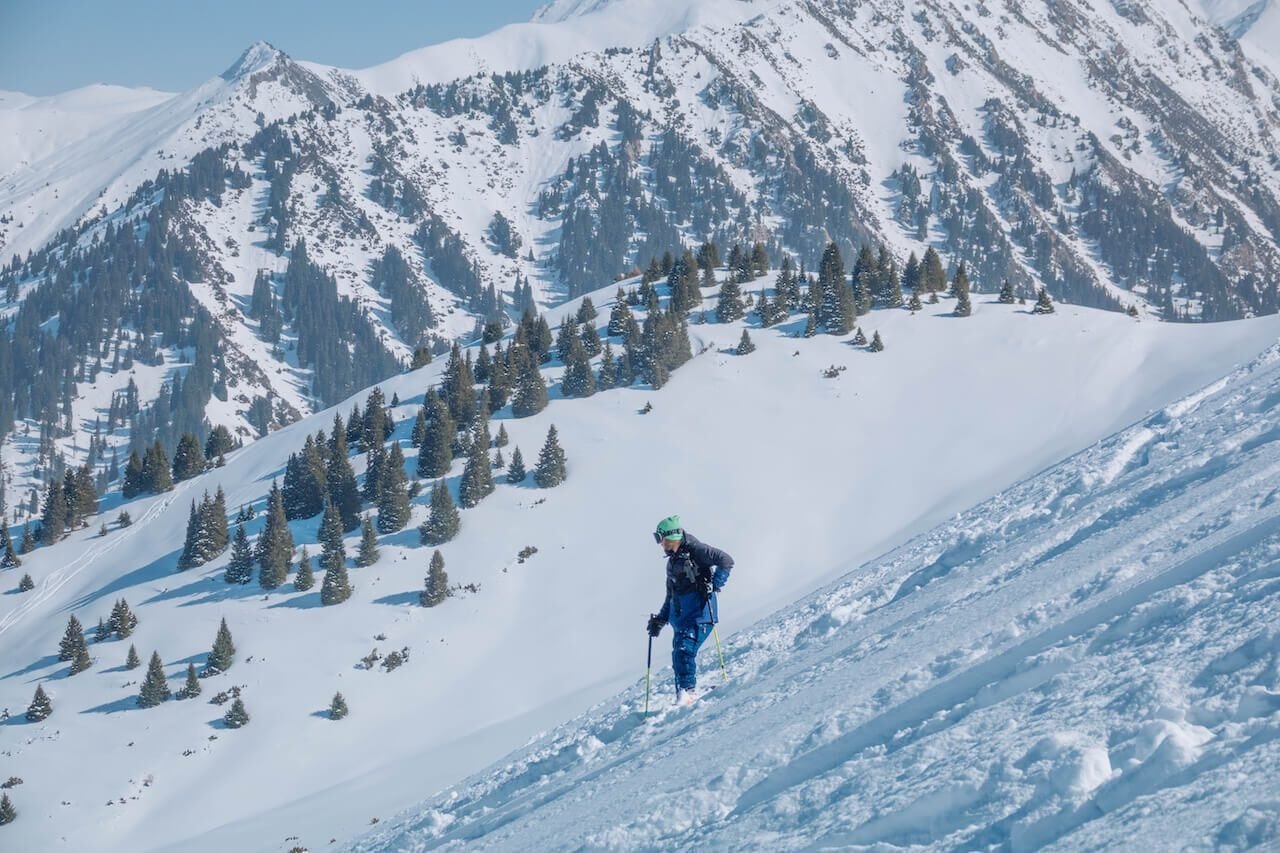
🇨🇳 China – Jikepulin, Hemu & the Allure of the Unknown
Living in South Korea, I’ve long known that China has some pretty well-developed ski resorts — especially places like Chongli (home to several 2022 Olympic venues), Yabuli in Heilongjiang, and Wanda Changbaishan near the North Korean border.
These areas offer wide groomers, solid infrastructure, and a ski experience that feels a lot like Korea: fun, accessible, and easy to navigate — but not exactly soul-stirring.
For this trip, I’ve been chasing something a little wilder. That’s what put Gulmarg and Kyrgyzstan at the top of the list. But while digging into Ryce Travel’s Kyrgyzstan trips, I stumbled onto something else: a “Ski Adventure China” itinerary. That’s the first time I’d heard the names Jikepulin and Hemu.
These zones are tucked into China’s remote northwest, near the Altai Mountains — close to Mongolia, Russia, and Kazakhstan.From what I’ve read, they feel like a different world from the polished mega-resorts in the east. We’re talking deep, Siberian-fed snowpack, isolated terrain, and what looks like the early days of a true freeride frontier.
Ryce describes it as a mix of powder skiing and cultural immersion, with yurts, village guesthouses, and backroad van travel shaping the experience. The tour might be a stretch for me this year — budget-wise and time-wise — but it’s firmly on my radar.
Of course, China’s vast geography and visa logistics add a layer of complexity that the other destinations don’t. But I’m intrigued. If Hemu and Jikepulin really are China’s answer to “Japow before Japow blew up,” I’d love to get there before the rest of the world catches on.
At this point, it’s a long-term wildcard — but one I’m keeping a close eye on.
💸 Cost Breakdown by Destination
I haven’t gone deep on pricing in this post — the tours I’ve mentioned are linked, and I’m not affiliated with any of them, so I’ll leave the sales pitches to the pros.
That said, if you’re trying to get a rough sense of which spots offer the most bang for your buck, here’s how I’d rank them based on what I’ve found so far.
Just keep in mind: these dollar signs are relative. Even the “cheapest” options will still run several thousand dollars once you factor in flights, gear, lodging, and guides and other travel expenses.
🇮🇳 Gulmarg, India – $
One of the best values for big-mountain skiing anywhere. Lodging is affordable, guided packages like Gulmarg Powder Guides cost far less than their European or Japanese equivalents, and even food is cheap once you’re there. It’s still a long-haul trip — but dollar for dollar, it’s one of the best values in big-mountain skiing.
🇰🇿 Shymbulak, Kazakhstan – $$
Lift tickets, lodging, and food are all reasonable by international standards. But it’s still a resort, and getting there — especially with gear — adds to the bill. If you’re mostly sticking to groomers, it might feel a little steep for what you get. That said, if you’re already heading to Kyrgyzstan, tacking on a day or two at Shymbulak could totally be worth it.
🇰🇬 Kyrgyzstan (Jyrgalan/Karakol) – $$
Ryce Travel’s full cat-ski tour isn’t exactly cheap, but compared to heli-skiing or backcountry lodges in Japan, it’s a solid deal. If you go the DIY route with a guide through Visit Karakol, you can trim costs even further. Just know that logistics, gear rental, and snow safety require a bit more legwork.
🇨🇳 China (Jikepulin/Hemu) – $$$
Skiing in this region of China still feels like the Wild West. Some tours aren’t outrageously priced on paper, but the visa process, long-haul travel, and limited beta add real friction. If you’re already in China, it’s a lot more approachable. Coming from Korea or the U.S.? It feel like a bit of a wildcard.
⛷️ How These Asia Ski Spots Stack Up
Not sure which of these off-the-beaten-path destinations is right for your next powder mission? Here’s how they compare at a glance — from snow quality and terrain to budget, safety, and ease of access.
| Destination | Snow | Terrain | Cost | Safety | Access |
|---|---|---|---|---|---|
| 🇮🇳 Gulmarg, India | 🔥🔥🔥 | Steep / Lift | $ | ⚠️ | Medium |
| 🇰🇿 Shymbulak, Kazakhstan | 🔥🔥 | Lift / Tree | $$ | ✅ | Easy |
| 🇰🇬 Kyrgyzstan (Jyrgalan / Karakol) | 🔥🔥🔥 | Cat / Tour | $$ | ✅ | Hard |
| 🇨🇳 China (Jikepulin / Hemu) | 🔥🔥❓ | Groomers +? | $$$ | ✅ / ❓ | Hard |
🏁 What I’m Leaning Toward for 2026
At this stage, I’d say China’s mostly off the table for this winter. Hemu and Jikepulin are still on my radar — especially as I keep exploring lesser-known ski zones across Asia — but for now, they’re more future curiosity than current priority.
Shymbulak’s still in play, but mostly as a side trip. If logistics and budget line up, I’d love to spend a day or two checking it out en route to Kyrgyzstan. That said, if something needs trimming, it’s the first to go.
Which brings me to the two heavyweights in my decision process: Gulmarg and Jyrgalan.
If the situation in Kashmir stays stable through the fall, Gulmarg might just take the win. It checks a lot of boxes for me. First off, the skiing looks phenomenal. That’s subjective, of course — but given my background (strong off-piste experience, limited touring), Gulmarg seems like a better match.
Second, the logistics might actually be easier than they seem. My wife works for Cathay Pacific, so I can likely get to Mumbai at a decent rate. From there, Gulmarg Powder Guides can help coordinate the rest. And while India’s tourist visa isn’t cheap, the savings on airfare and daily costs might balance things out.
There’s also something more independent-feeling about Gulmarg. It’s still a guided experience, but it doesn’t carry the same full-package-tour vibe. I’m not really a group-tour guy — but I’m also not about to let that hang-up get in the way of skiing safely in remote parts of the world.
That said, there are still real questions to wrestle with — and safety’s the obvious one. I’m not looking to put myself in harm’s way, and I don’t want to force my tourism into a place where it’s not truly welcome. The resorts and guides clearly want the business — but what about the broader community? I’ve experienced genuine hospitality during tense times elsewhere (Myanmar comes to mind), but I’m not sure if that holds true in Kashmir. It’s something I want to understand better before booking.
There’s also the bigger picture of what I’m building here. I plan to blog about wherever I go — and ideally, this trip feeds into my longer-term goal of offering personalized travel planning services. In that sense, Kyrgyzstan might have more potential. It feels like a place more travelers could envision themselves going in the near future.
Gulmarg, on the other hand, carries more uncertainty right now. I’m still personally open to it — I’m just less sure how many others would be willing (or able) to follow that same path.
So yeah — I haven’t fully decided yet. And if you’ve skied either of these places (or considered them), I’d genuinely love to hear your thoughts.
👉 You can reach me through my Contact page, which includes my email and social links.
📩 If you’ve skied Gulmarg or Kyrgyzstan — or have thoughts to share — I’d genuinely love to hear from you.
👉 And if you’re planning your own off-the-beaten-path ski or trekking adventure in Asia, I’m currently offering free, personalized trip planning help. Click here to learn more.
❓ Skiing in Asia FAQs
Where can you ski in Asia?
Asia offers a surprisingly diverse range of ski destinations. Japan is the best-known, famous for deep powder and consistent snowfall — especially on Hokkaido. South Korea has a compact but well-developed resort scene near Seoul. China’s ski infrastructure has grown rapidly post-2022 Olympics. Meanwhile, Central Asia (Kazakhstan, Kyrgyzstan, and India’s Kashmir region) offers remote, big-mountain terrain for those seeking adventure. Whether you’re into luxe resorts or off-grid powder, Asia has something for nearly every type of skier.
Is Gulmarg, India safe for skiers right now?
That depends. Gulmarg sits in Indian-administered Kashmir, a region with a long history of political tension. Outfitters like Gulmarg Powder Guides are experienced and well-reviewed, but incidents like the 2025 Pahalgam attack have raised real concerns. Many skiers still go — but it’s a personal call. Check travel advisories, follow local updates, and gauge your own comfort level before committing.
What’s skiing in Kyrgyzstan like?
It’s raw, remote, and quietly amazing. Places like Jyrgalan and Karakol offer cat-skiing and touring terrain that feels like a throwback to skiing’s soul — big lines, no lift lines, and a strong DIY vibe. Expect local guides, yurts, and cultural immersion alongside the powder. It’s not polished, but that’s the point.
How does Shymbulak in Kazakhstan compare to other spots?
Shymbulak is lift-accessible, modern, and just outside Almaty — making it one of the easiest ski areas to reach in Central Asia. The scenery’s gorgeous, and the infrastructure is solid. That said, it may feel limited for advanced skiers unless you link it with backcountry or pair it with Kyrgyzstan. It’s a great intro to the region.
Can you ski in China?
Yes — and the scene is expanding fast. Popular resorts like Yabuli, Changbaishan, and Thaiwoo boast modern facilities, with many catering to beginner and intermediate riders. But the real intrigue is farther west. Remote regions like Hemu and Altay offer deep snow, cultural immersion, and emerging backcountry terrain — if you’re up for the logistics.
Is Japow still worth it?
Definitely — the snow’s still world-class. But it’s no longer the secret it once was. Resorts are busier, dining now requires reservations, and post-COVID tourism has spiked. Still, if you prep ahead and manage expectations, Japan continues to deliver one of the best ski trips on Earth.
